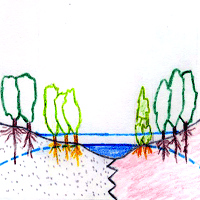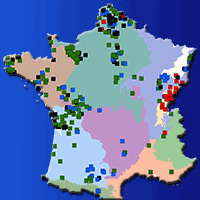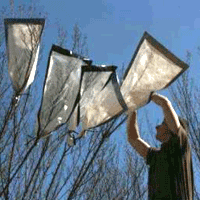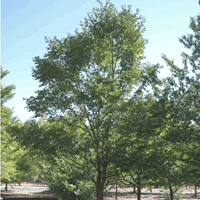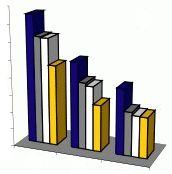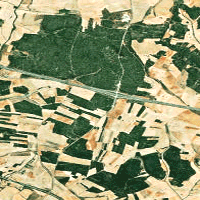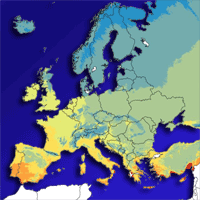
Implementing the dynamic conservation of elm genetic resources in Europe: case studies and perspectives
Eric Collin (1-3) , Michele Bozzano (2)
iForest - Biogeosciences and Forestry, Volume 8, Issue 2, Pages 143-148 (2015)
doi: https://doi.org/10.3832/ifor1206-008
Published: Aug 07, 2014 - Copyright © 2015 SISEF
Review Papers
Collection/Special Issue: 3rd International Elm Conference, Florence (Italy - 2013)
The elms after 100 years of Dutch Elm disease
Guest Editors: A. Santini, L. Ghelardini, E. Collin, A. Solla, J. Brunet, M. Faccoli, A. Scala, S. De Vries, J. Buiteveld
Abstract
Many European countries have undertaken the static preservation of native elm genotypes in clone collections maintained ex situ. Less development has been devoted to the dynamic conservation of elm populations in situ. Case studies of elm conservation in France are given here as an illustration of methods employed at country level. We also briefly review the process used by the “European Forest Genetic Resources Programme” (EUFORGEN) to monitor elm dynamic conservation in a pan-European perspective. Dynamic conservation methods were promoted by EUFORGEN through leaflets, strategies, Technical Guidelines and the geo-referenced database EUFGIS on Dynamic Conservation Units (DCUs). Because the network of DCUs needs to be representative of the partitioning of adaptive diversity across the species distribution range, a GIS-aided approach has been developed to position DCUs in environmental zones and identify conservation gaps. The two DCUs of European white elm (Ulmus laevis Pall.) selected in riparian forests of two different climatic zones of France show that management oriented toward habitat protection is compatible with dynamic conservation, and that the species can still be conserved in situ in spite of Dutch Elm Disease (DED). Collaboration with habitat conservationists enabled the monitoring of losses to DED and the assessment of within-population diversity for flowering phenology. Collaboration with forest geneticists revealed that the diversity of the Garonne population was low, but that it contained rare DNA variants and adaptive traits. Since 1987, experimental restoration of countryside hedges has been carried out, using field elm clones (U. minor Mill.) selected from the French national collection and tested for lower susceptibility to the agent of DED in artificial inoculation tests. Such plantations can be viewed as a very dynamic form of conservation if they permit the local gene pool to be reinforced with trees able to reach sexual maturity and exchange pollen with elms in the neighborhood, hence contributing new genotypes that will be submitted to natural selection and provide fuel for ongoing adaptation processes. Initiatives assembling a large consortium of stakeholders, including habitat conservationists and hedge re-constructors, are needed to trigger new conservation projects.
Keywords
Elm, Ulmus minor, Dynamic Conservation, Population Genetics, Europe, France
Authors’ Info
Authors’ address
Irstea, UR EFNO, Centre de Nogent-sur-Vernisson F-45290 Nogent-sur-Vernisson (France)
EUFORGEN, Bioversity International, v. dei Tre Denari 472/a, I-00057 Maccarese, Rome (Italy)
French Commission of Forest Genetic Resources, Ulmus spp. conservation programme
Corresponding author
Paper Info
Citation
Collin E, Bozzano M (2015). Implementing the dynamic conservation of elm genetic resources in Europe: case studies and perspectives. iForest 8: 143-148. - doi: 10.3832/ifor1206-008
Academic Editor
Alberto Santini
Paper history
Received: Dec 19, 2013
Accepted: Mar 05, 2014
First online: Aug 07, 2014
Publication Date: Apr 01, 2015
Publication Time: 5.17 months
Copyright Information
© SISEF - The Italian Society of Silviculture and Forest Ecology 2015
Open Access
This article is distributed under the terms of the Creative Commons Attribution-Non Commercial 4.0 International (https://creativecommons.org/licenses/by-nc/4.0/), which permits unrestricted use, distribution, and reproduction in any medium, provided you give appropriate credit to the original author(s) and the source, provide a link to the Creative Commons license, and indicate if changes were made.
Web Metrics
Breakdown by View Type
Article Usage
Total Article Views: 62179
(from publication date up to now)
Breakdown by View Type
HTML Page Views: 52540
Abstract Page Views: 3458
PDF Downloads: 4586
Citation/Reference Downloads: 79
XML Downloads: 1516
Web Metrics
Days since publication: 4137
Overall contacts: 62179
Avg. contacts per week: 105.21
Citation Metrics
Article Citations
Article citations are based on data periodically collected from the Clarivate Web of Science web site
(last update: Mar 2025)
Total number of cites (since 2015): 13
Average cites per year: 1.18
Publication Metrics
by Dimensions ©
Articles citing this article
List of the papers citing this article based on CrossRef Cited-by.
References
Strategies and guidelines for the conservation of the genetic resources of Ulmus spp. In: “Noble Hardwoods Network, Report of the fourth and fifth meetings, Sept. 1999 and May 2001” (Turok J, Eriksson G, Russel K, Borelli S eds). International Plant Genetic Resources Institute, Rome, Italy, pp. 50-67.
Gscholar
Technical guidelines for genetic conservation of the European white elm (Ulmus laevis Pall.). International Plant Genetic Resources Institute, Rome, Italy, pp. 6.
Gscholar
Methods and progress in the conservation of elm genetic resources in Europe. Investigacion Agraria: Sistemas y Recursos Forestales 13: 261-272.
Gscholar
Conservation de populations d’orme lisse (Ulmus laevis Pall.) en Val de Loire et Val d’Allier: rapport final “Plan Loire Grandeur Nature” [Conservation of White elm populations (Ulmus laevis Pall.) in Val de Loire and Val d’Allier. Final report of “Plan Loire Grandeur Nature”]. Cemagref, Nogent/Vernisson, France, pp. 15. [in French]
Gscholar
Pan-European strategy for genetic conservation of forest trees: establishment of a core network of dynamic conservation units. Working Group report, EUFORGEN, Bioversity International, Rome, Italy, pp. 18.
Gscholar
Atlas florae europaeae. Distribution of vascular plants. The Committee for Mapping the Flora of Europe and Societas Biologica Fennica, Vanamo, Helsinki, Finland, vol. 3, pp. 128.
Gscholar
Translating conservation genetics into management: pan-European minimum requirements for dynamic conservation units of forest tree genetic diversity. Biological Conservation 157: 39-49.
CrossRef | Gscholar
Dynamic conservation of forest genetic resources in 33 European countries. Conservation Biology 27: 373-384.
CrossRef | Gscholar
About Ulmus laevis Pal. in Italy. In: Proceedings of the “3rd International Elm Conference. The elm after 10 years of Dutch elm disease” (Manzo R ed). Florence (Italy) 9-11 October 2013. IPP-CNR , Florence, Italy, pp. 39.
Online | Gscholar
La distribution des espèces arborescentes de la zone septentrionale tempérée [The tree species of the Northern temperate zone and their distribution]. Silvae Orbis 4, Centre International de Sylviculture, Berlin-Wannsee, Germany. [in French]
Gscholar
Ulmus laevis in the Iberian Peninsula: a review of its ecology and conservation . iForest (early view): e1-e8.
CrossRef | Gscholar
Quantitative and molecular genetic variation in Ulmus laevis Pall. Ph.D. Thesis, Department of Plant Biology and Forest Genetics, Swedish University of Agricultural Sciences, Uppsala, Sweden, pp. 33 + Appendix.
Gscholar


